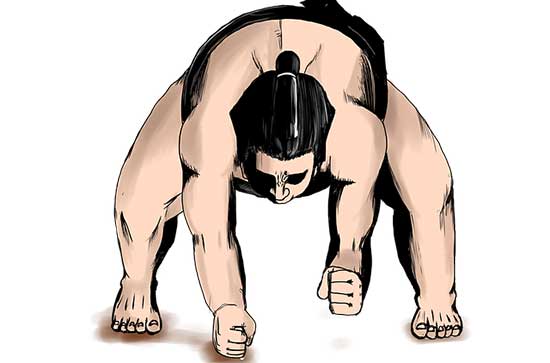Did you know that there are advanced ranks beyond the black belt? In this article, we will explore the various rank systems in martial arts and the prestige associated with each level.
Get ready to dive into the fascinating world of martial arts ranks and discover the path to mastery.
Contents
Takeaways
- The white belt is the starting point in martial arts and focuses on developing basic skills and building a strong foundation.
- Progressing through colored belts requires consistent practice, regular attendance, and continuous improvement of techniques.
- Achieving the black belt represents years of hard work, discipline, and mastery in martial arts.
- Advanced ranks in martial arts involve learning new forms, weapons, and self-defense techniques, as well as opportunities for teaching and mentoring.
The White Belt Journey
You’ll learn valuable techniques and principles during the white belt journey in martial arts.
As a white belt, you’re just beginning your training and laying the foundation for your future growth in the martial arts. The focus at this stage is on developing basic skills and building a strong physical and mental foundation.
You’ll learn fundamental techniques such as punches, kicks, and basic self-defense moves. These techniques won’t only improve your physical fitness and coordination but also teach you discipline and self-control.
The white belt journey also emphasizes the importance of respect, both for your instructors and fellow students. It’s a time of humility and learning, where you’ll embrace the mindset of a beginner and absorb the knowledge and wisdom of your instructors.
Progressing Through the Colored Belts
To advance through the colored belts in martial arts, you must consistently practice and demonstrate your skills, while also staying dedicated to your training. It isn’t enough to simply show up to class; you must put in the effort and commitment to improve.
Here are five key factors that will help you progress through the colored belts:
- Regular attendance: Attend classes regularly to learn and refine your techniques.
- Skill development: Continuously work on improving your techniques and mastering new ones.
- Physical fitness: Maintain a good level of physical fitness to perform at your best.
- Mental focus: Stay mentally focused and present during training to maximize your learning.
- Respect and discipline: Show respect to your instructors and fellow students, and follow the rules and etiquette of the martial arts school.
The Prestige of the Black Belt
The black belt holds a prestigious status, and it represents the culmination of years of hard work and dedication in martial arts. Achieving the black belt is no easy feat; it requires discipline, perseverance, and a deep understanding of the art form.
As you embark on your journey to earn the coveted black belt, you’ll undergo rigorous training, both physically and mentally. The black belt signifies mastery and expertise in your chosen martial art, and it commands respect from both fellow practitioners and outsiders. It’s a symbol of your commitment to self-improvement and personal growth.
But remember, the black belt isn’t the end of your martial arts journey; rather, it’s the beginning of a new chapter, where you continue to refine your skills and share your knowledge with others. Embrace the prestige and honor that comes with the black belt, and let it inspire you to reach even greater heights in your martial arts journey.
Beyond Black Belt: Advanced Ranks in Martial Arts
As a black belt, you have the opportunity to advance even further in your martial arts journey, taking on advanced ranks and honing your skills to a new level. Achieving the black belt is a significant milestone, but it doesn’t mark the end of your progression.
Here are five reasons why pursuing advanced ranks can be beneficial:
- Continuous growth: Advancing to higher ranks challenges you to constantly improve and refine your techniques.
- Expanded knowledge: Advanced ranks often involve learning new forms, weapons, and self-defense techniques, broadening your martial arts repertoire.
- Leadership development: As you progress to higher ranks, you may have the opportunity to teach and mentor others, honing your leadership skills.
- Increased responsibility: Higher ranks come with greater expectations, pushing you to become more disciplined, focused, and dedicated.
- Sense of achievement: Each advanced rank you attain brings a sense of accomplishment and pride, motivating you to strive for even greater success.
Exploring Other Rank Systems in Martial Arts
You can explore other rank systems in martial arts by researching and joining different styles that offer unique progression paths. Each martial art style has its own ranking system, with various belt colors or titles to indicate a practitioner’s skill level.
For example, in Brazilian Jiu-Jitsu, there’s a belt system that ranges from white to black, with several intermediate belts in between. On the other hand, Taekwondo uses a color belt system, starting with white and progressing through different colors until reaching the black belt.
Additionally, some styles like Krav Maga and Muay Thai may not have a belt system at all but instead focus on skill development and practical application.
Conclusion
So, whether you’re just starting your journey with a white belt or have already achieved the prestigious black belt, the world of martial arts offers a wide range of ranks to pursue.
From colored belts representing progress and dedication to advanced ranks that push your skills to new heights, martial arts truly has something for everyone.
So, keep training, keep improving, and embrace the journey as you explore the many rank systems within this ancient and honorable discipline.





